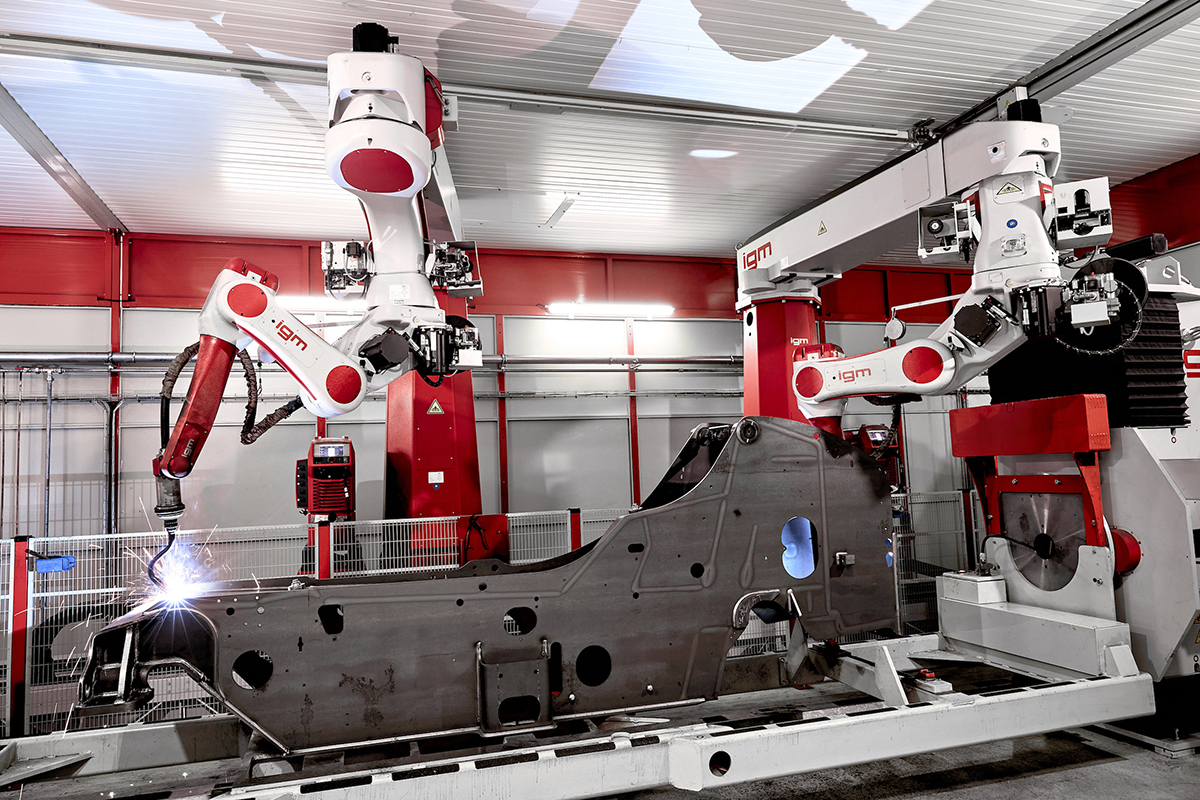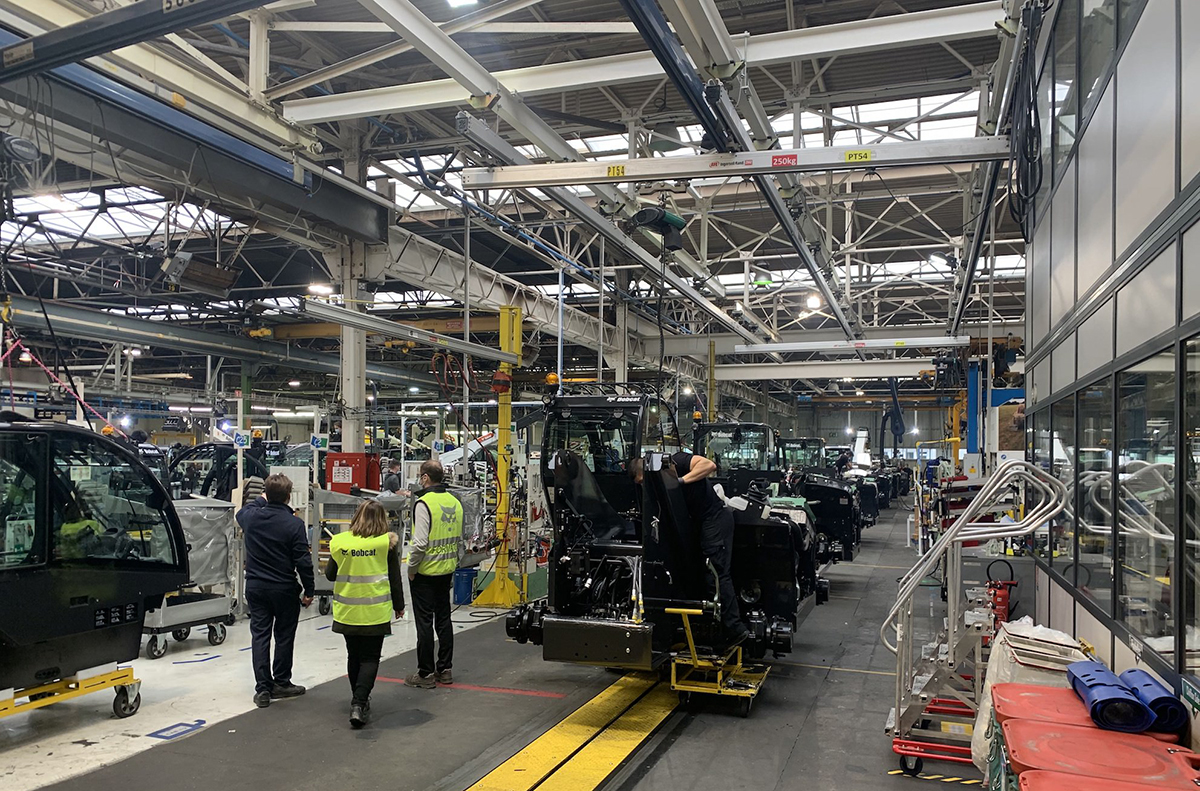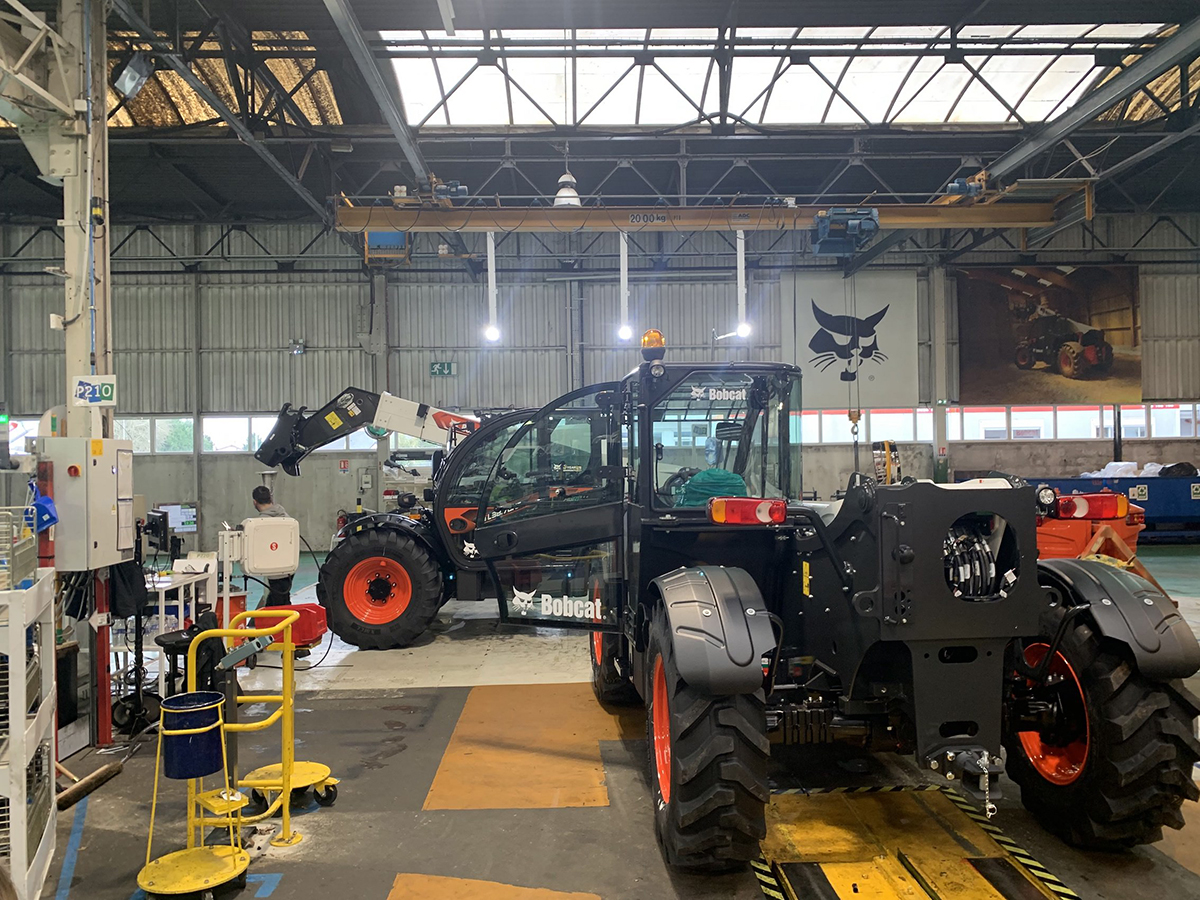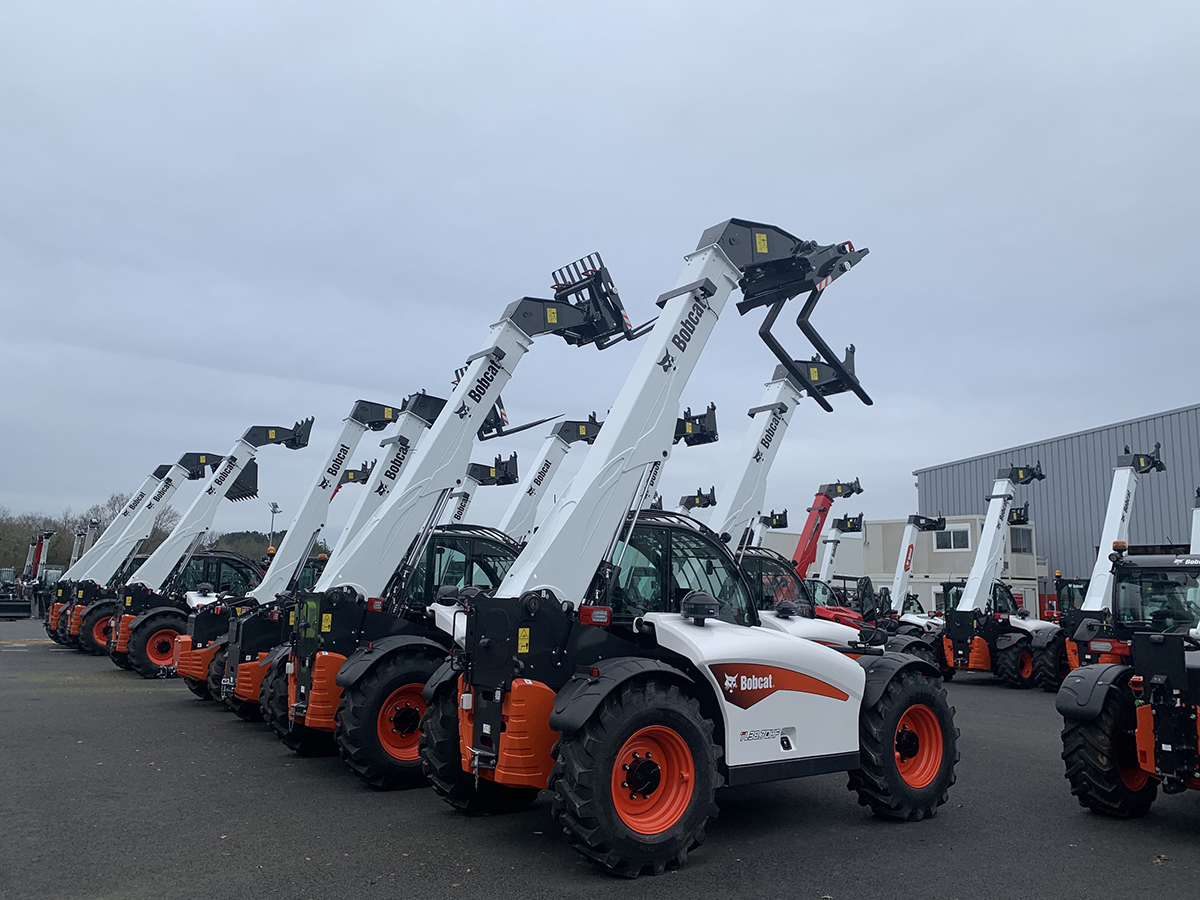AFTER beating production records in 2021, the Bobcat rigid telehandlers plant in Loire-Atlantique, France, is now on course to reach the next level, with plans afoot to double activity by 2025.
Bobcat said telehandlers have been part of the DNA of the Pontchateau site for more than 50 years. Before 2000, the factory manufactured the Sambron range of products, but after a succession of changes in ownership, it is Bobcat telehandlers that now come off the production line.
All the equipment specialist’s rigid telehandlers for the global market are manufactured at the plant, including 29 models split between ranges for the construction and agricultural sectors. The factory was originally built on an 82,000 square metres plot of land and was extended in 2019 to meet higher demand.
“In 2016, as our logistics capacity reached saturation and demand grew, Bobcat defined a three-year expansion plan for the facility, representing 4 million euros of investment,” said site director Jerome Miermont.
Completed in 2019, with the addition of 13,000 square metres of extra space and a new logistics building, these developments are described as having made it possible to meet significant growth in the brand’s activity (+75% between 2017 and 2022).
The design office has a team of 40 employees operating from Pontchateau, together with another team based in the Czech Republic, at the Doosan Bobcat European HQ.
On the production line, the machines start to take shape during the mechanical welding operations, which are organised in two lines: one for the boom, and the other for the frame. After the steel parts have been laser cut, they are bent into the right shape – for example, to form the two half-sections of the boom in U form, after which the next step is welding.
“To optimise production, we have equipped ourselves with two larger robots, each of which welds all the frames, saving 30% in time,” Jerome Miermont added. “The last robot, representing an investment of 850,000 euros, arrived last September.”
The various parts of the telehandlers are then sent to the blast chamber for shot blasting, before being painted.
The assembly line is organised around 58 stations. Bobcat explained that to save time and space, a team in the kitting workshop has prepared the necessary components for each station in advance.
On the sub-assembly line, various components are assembled to gradually build the machine on the main line, which alone comprises 17 different stations. Before the tyres are fitted, the carriage is filled with oil and programmed. This is followed by the fitting of the mudguards and a performance test. The final assembly station is reserved for the installation of the hood and stickers, then the machine goes through a test phase (static and dynamic) for four hours.
Up to 17 machines can be assembled daily.
“Last year we produced 2,658 machines. This is a record number, well above the planned target of 2,455 units,” Jerome Miermont said.
With an estimated annual production capacity of 3,500 machines in 2022, Bobcat revealed there is still space for growth.
















